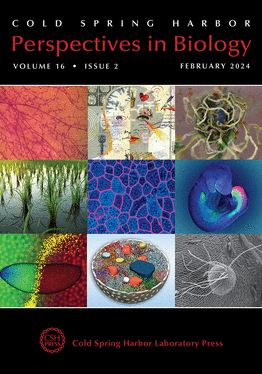新热带地区是适应性辐射的摇篮
IF 6.9
2区 生物学
Q1 CELL BIOLOGY
引用次数: 0
摘要
新热带生态系统以动植物适应性辐射的众多实例而闻名,这些实例导致了高度的生物多样性和特有性。然而,我们仍然缺乏对促成这些适应性辐射的非生物和生物因素的全面回顾。为了填补这一空白,我们深入研究了该地区的地质历史,包括安第斯隆升、巴拿马地峡的形成以及圭亚那和巴西盾牌的出现等构造事件的作用。我们还探讨了新栖息地的出现所创造的生态机会的作用,以及关键创新(如新的摄食策略或繁殖机制)的作用。我们讨论了适应性辐射的不同范例,包括达尔文雀和阿诺里斯蜥蜴等经典范例,以及凤梨和羽扇豆等最新范例。最后,我们提出了在地质背景下通过生态相互作用实现适应性辐射的新实例。通过这些研究,我们深入了解了各种因素的复杂相互作用,这些因素促成了新热带地区生命的显著多样性,并强调了该地区在理解生物多样性起源方面的重要性。本文章由计算机程序翻译,如有差异,请以英文原文为准。
Neotropics as a Cradle for Adaptive Radiations
Neotropical ecosystems are renowned for numerous examples of adaptive radiation in both plants and animals resulting in high levels of biodiversity and endemism. However, we still lack a comprehensive review of the abiotic and biotic factors that contribute to these adaptive radiations. To fill this gap, we delve into the geological history of the region, including the role of tectonic events such as the Andean uplift, the formation of the Isthmus of Panama, and the emergence of the Guiana and Brazilian Shields. We also explore the role of ecological opportunities created by the emergence of new habitats, as well as the role of key innovations, such as novel feeding strategies or reproductive mechanisms. We discuss different examples of adaptive radiation, including classic ones like Darwin's finches and Anolis lizards, and more recent ones like bromeliads and lupines. Finally, we propose new examples of adaptive radiations mediated by ecological interactions in their geological context. By doing so, we provide insights into the complex interplay of factors that contributed to the remarkable diversity of life in the Neotropics and highlight the importance of this region in understanding the origins of biodiversity.
求助全文
通过发布文献求助,成功后即可免费获取论文全文。
去求助
来源期刊

Cold Spring Harbor perspectives in biology
CELL BIOLOGY-
CiteScore
15.00
自引率
1.40%
发文量
56
审稿时长
3-8 weeks
期刊介绍:
Cold Spring Harbor Perspectives in Biology offers a comprehensive platform in the molecular life sciences, featuring reviews that span molecular, cell, and developmental biology, genetics, neuroscience, immunology, cancer biology, and molecular pathology. This online publication provides in-depth insights into various topics, making it a valuable resource for those engaged in diverse aspects of biological research.
 求助内容:
求助内容: 应助结果提醒方式:
应助结果提醒方式:


